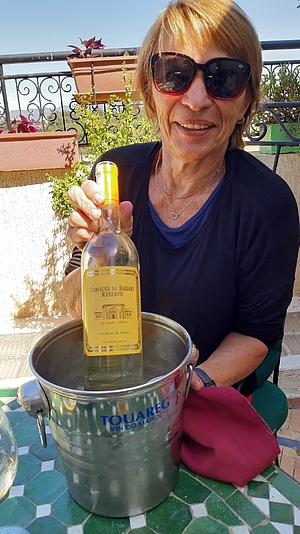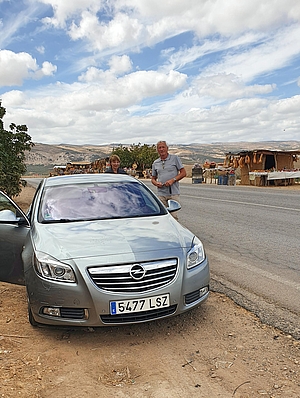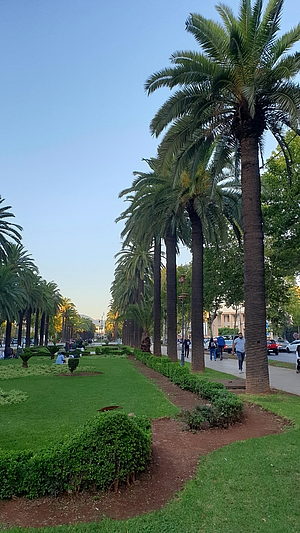Morocco 2022
Visit to Morocco September 2022
Morocco - September 27 - October 4, 2022
Participants: Ivana, Georg + Blanka and Milan Moestl
Day 1 - An hour cruise from Algeciras to Ceuta, further to Tetouan
The sea was as calm as a pond, worries about possible seasickness unnecessary. Everything went well at the Spanish border. However, on the Moroccan side, the immigration officers discovered that we did not have vehicle registration certificate, we had only the document with technical details of the car where it is noted how often you have to go for the check (the car has a Spanish license plate, it was re-registered from a German license plate). We were saved by the fact that, after a long argument, I realized that I probably had the required document scanned on my laptop, so I took it out from the computer case and started to search: and I found it! After a futile attempt by the immigration official to take a picture of the document with her mobile from the screen, she allowed me to enter her office and we printed the Spanish vehicle registration on her printer via USB stick. Then this kind and helpful female immigration official issued the relevant document for the temporary stay of our car in Morocco and we could continue.
We reached Tetouan, the white city. Many travel guides are warning that Tetouan is a town of hashish dealers, pickpockets and fake guides. We didn't come across anyone like that (my daughter would probably say that we were not the right target group for them, especially when it comes to drugs). At the same time, I must also point out that we have not seen a single refugee, although television footage from this very area (Ceuta, Tetouan, Tangier) constantly shows a lot of refugees.
We found that Tetouan is a nice clean town with Spanish elements which gives it a special charm. Its medina is protected as a UNESCO World Heritage Site. We admired the royal palace and various mosques. We were accommodated in the Riad Dar Achaach hotel, which charmed us with its typical Moroccan layout and decorations. Here we have discovered for the first time that the most common pet in Morocco is a cat - every hotel, every restaurant had several of them - probably feeding on the leftovers of the guests. Some of them were quite nice specimens.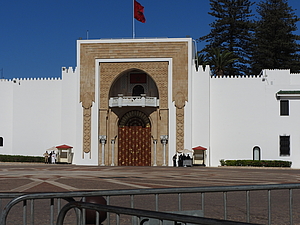
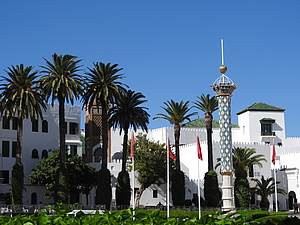
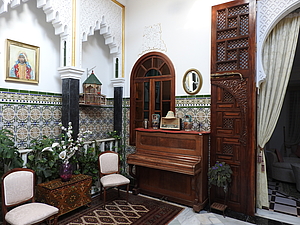
Day two – journey to Chefchaouen, the blue city
On the way to Chefchaouen, we were stopped by the police because we exceeded the speed limit and we were really lucky that the nice immigration official at the border issued us the appropriate document for the car, otherwise we would have been in trouble. The fine was (after haggling) 400 dirhams, which is €40.
Our Ziryab hotel with a swimming pool had the right Moroccan atmosphere, but when we woke up in the morning there was no electricity. The power cut was for some reason in the whole town. As we closed the blinds with the electric switch previous evening, we were sitting in the complete darkness. Packing suitcases and getting ready for the next trip only with help of light coming from the mobile phone was quite a challenge, when we tried not to forget something. 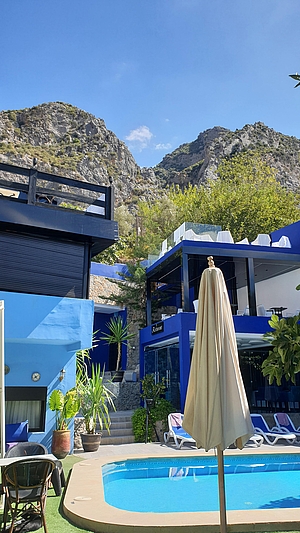
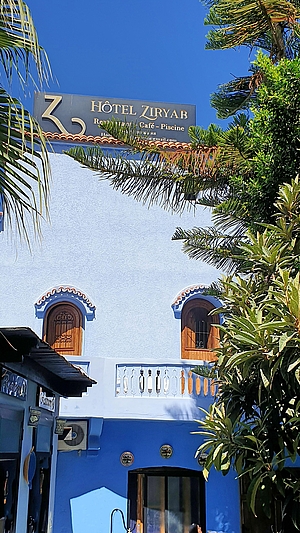
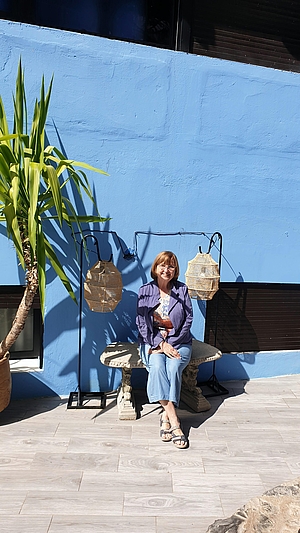
Chefchaouen is a blue town. At first only doors were painted blue in Chefchaouen. Over time, however, it became more and more blue. Today it is impossible to escape blue tones, so you feel as if the city had fallen into a pot of blue color. Everything is painted: walls, doors, roofs, even roads. Especially in the late afternoon there is a fantastic display of colors, also the sunset view is fantastic.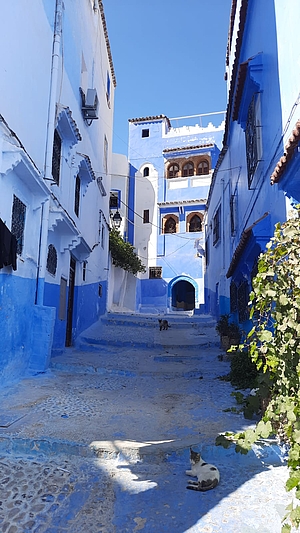
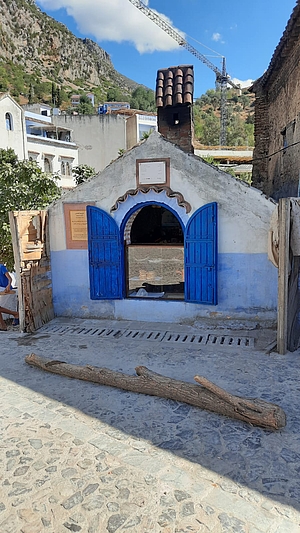
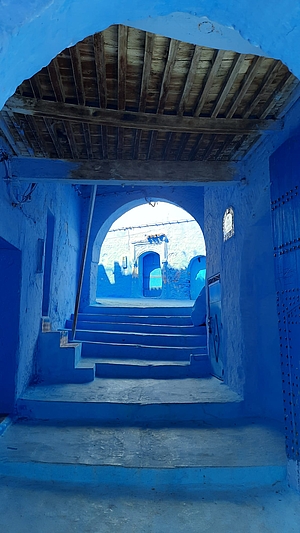
The city is located at an altitude of 600 m above sea level and stairs or narrow streets almost always lead either steeply up or down the hill. It was founded in the 15th century by Andalusian Muslims who fled Spain when it was reconquered by Isabelle I of Castile and Ferdinand II of Aragon. For fear of their pursuers, they closed the city completely. Until 1920, access to all non-Muslims was forbidden, but today people from all over the world create an interesting atmosphere.
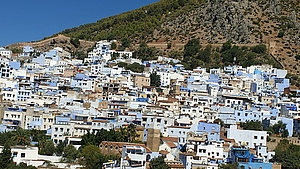
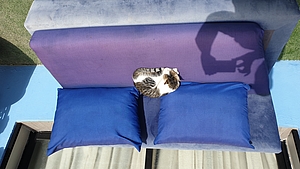
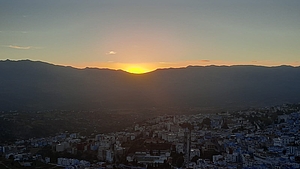
Third and fourth day – Fez
On the way to Fez, we admired the ever-changing landscape. Around the road, the vendors sold pumpkins, red and yellow melons, tomatoes and pomegranates out of which they pressed a delicious juice for thirsty travelers.
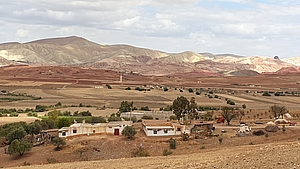
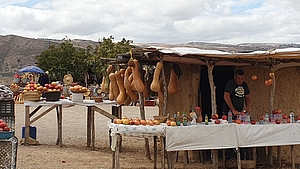
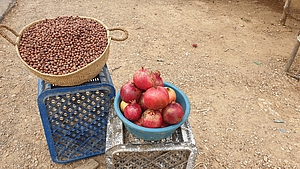
Fez is one of the so-called royal or imperial cities. Morocco has four of them.
Fez and Marrakesh changed their role as a capital many times, Meknes was the capital between 1672-1727. To avoid the rivalry between the first two, Rabat was designated by French as the fourth capital in 1912 and kept its position to this day.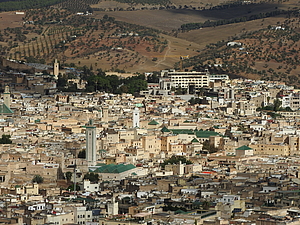
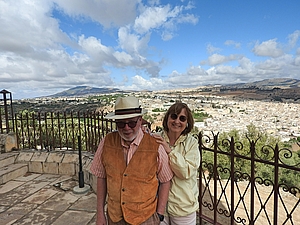
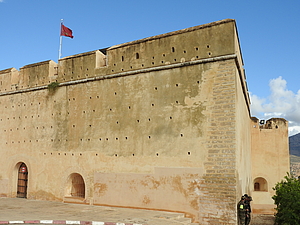
Fez is an ancient city founded at the beginning of the 9th century by Idris II, the second ruler of the Idrisid dynasty. It gradually flourished as a powerful bastion of Islamic culture and faith, but trade, science and art flourished as well. The local Al-Karaouine University was founded in 859, it is the oldest continuously operating university in the world.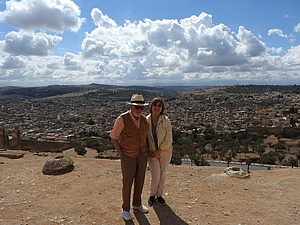
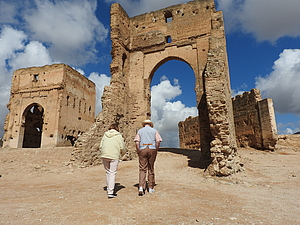
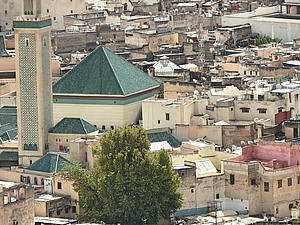
The local medina is considered to be the largest and best-preserved historical center of the Arab-Muslim world, it has retained most of its original functions - there is a university, madrasa, palaces, residential buildings, mosques and fountains - all from the 13th-14th centuries built by the Marinids dynasty. Under their rule, Fez replaced Marrakesh as the capital of the kingdom. Although the capital was finally transferred to Rabat in 1912, Fez retained its status as the cultural and spiritual center of the country.
We had a view at the medina mainly from the south hill with the Borj Sud fortress and later from the north hill with Borj Nord fortress. On the top of the north hill there were two policemen who kindly let me to take a photo also of their police horse.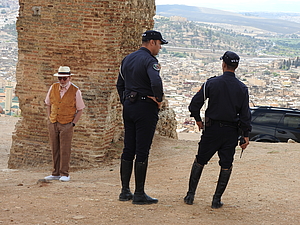
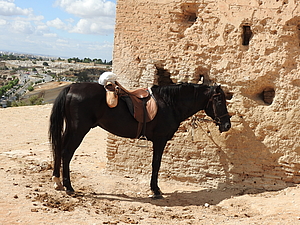
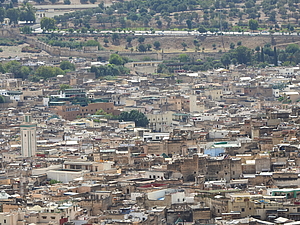
Then we visited a pottery which manufactures typical Fez ceramics. It is made from local gray clay. A potter makes various items from the clay on his wheel. Once inside the kiln, heat turns soft clay into a hard one. The kilns are fueled by pits from local olives (there are countless olive groves around the town, olives appear automatically on the table in every restaurant). The artists decorate the stoneware by arabesque designs, with prevailing blue colour. We most admired the tajine-type vessels, which consist of a shallow bottom bowl and a distinct conical funnel-shaped lid that ends in a ball at the tip. There are used for preparation of both vegetable and meat dishes by slow stewing.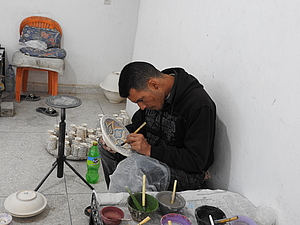
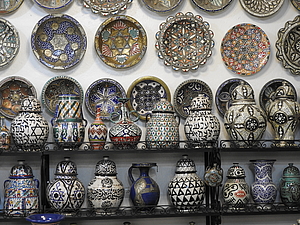
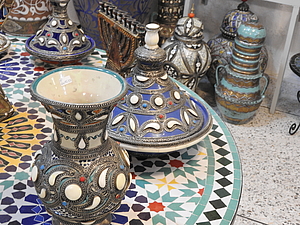
We also saw (only from the outside, no access inside) the royal palace and walked through the avenue that bears the name of the former king Hassan II. It is said to be an imitation of Champs Elysées, but with palm trees (the boulevard of Hassan II is of course a must in every Moroccan city). 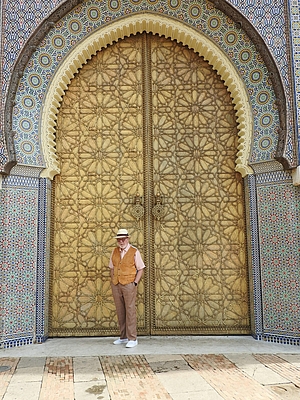
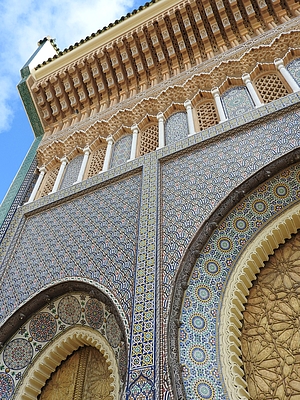
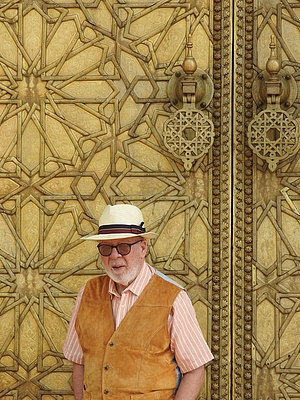
We had lunch in the medina just at the entrance to the Blue Gate. I have ordered a tajine with lamb, George couscous with lamb. I also had a typical Moroccan soup called harira which is thick legume soup with meat, egg and coriander. 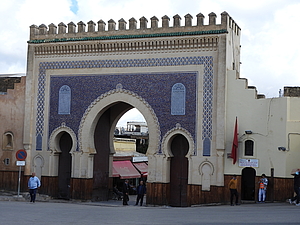
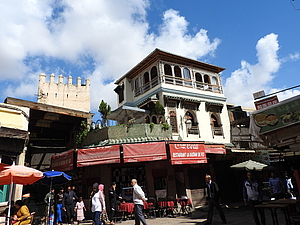
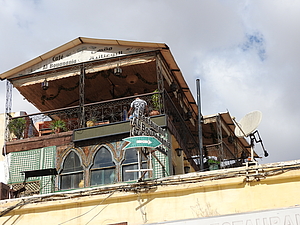
Two pretty young Moroccan girls sitting at the next table asked me to take their picture. They gave me a phone number, but unfortunately I did not know how to send them the photos as I could not find them on Whatsapp. When I offered to take a picture of them with their mobile phone, they just shook their heads. I only understood the reason when a similar situation occurred in Volubilis: a young, nice couple also wanted to have their picture taken by my mobile. Most of the young Moroccans of the middle class have mobile phones, but with no cameras! I could not imagine it any more. 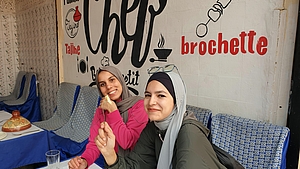
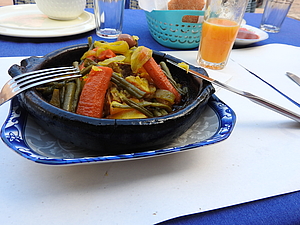
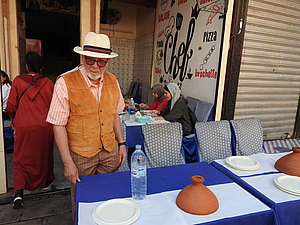
Fifth day - Meknes
The journey from Fez to Meknes is only 50 km. We stayed at the Hotel Le Collier de la Colombe (Pigeon Necklace) right next to the walls. We had a typical Moroccan lunch again, haria soup and mezzes appetizers and trout. After a short siesta, we went out for a tour of the city and decided to use a horse-drawn carriage. However, we found that almost all famous monuments of the city are under reconstruction. The gate of Bab Al Masour was covered with a tarpaulin with its photo. The same, i.e. reconstruction, happened to royal stables, pantries and other buildings. 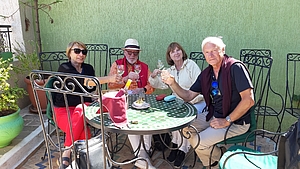
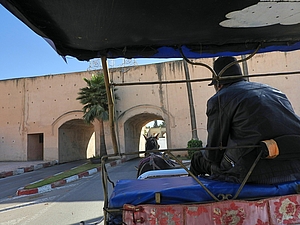
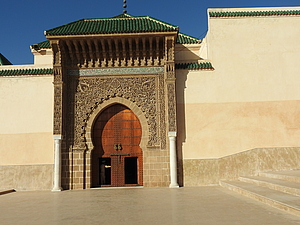
The only open monument in this otherwise very ancient city of Meknes is presently the mausoleum of the Moroccan Sultan Moulay Ismail, who ruled in the 17th century. Moulay Ismail made Meknes a royal city and supported a number of construction projects throughout his reign. However, his personality is contradictory. He is listed in the Guinness Book of Records as the father of the largest number of children, it has been proven that he fathered 888 of them, but allegedly there were more. He had 500 concubines and slept with one of them every night of his life. On the other hand, he was infamous for his cruelty, he is said to have killed about 20,000 slaves, mostly just on a whim. 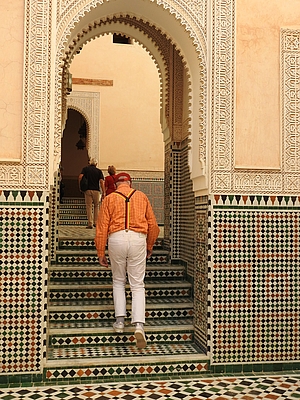
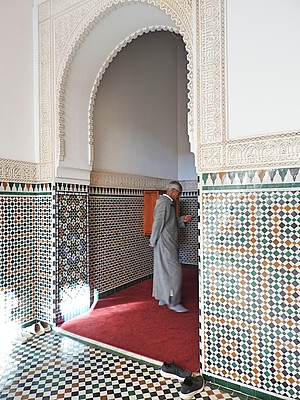
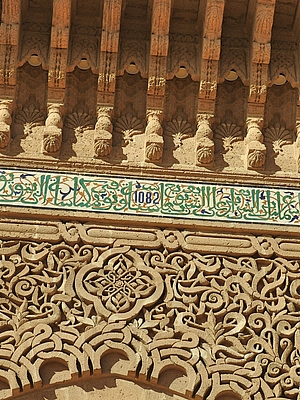
Sixth day - journey from Meknes via Larache to Asilah
Our first stop was at the Berber-Roman city of Volubilis, only partially revealed by excavations. It was probably the capital of the Kingdom of Mauretania and developed from the 3rd century BC, first as a Berber, then as a Moorish seat. Under Roman rule, it grew rapidly from the 1st century AD until it covered an area of 42 hectares. The most interesting is the preserved Arc de Triomphe and the remains of houses with mosaic floors. 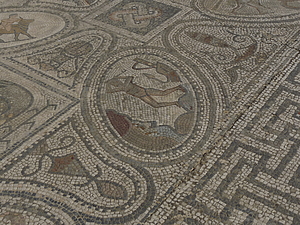
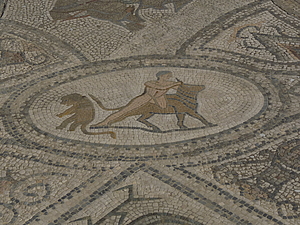
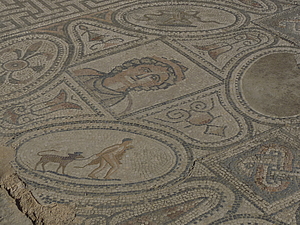
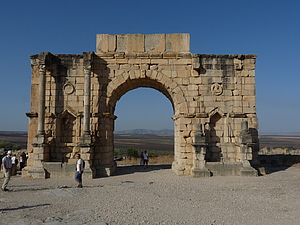
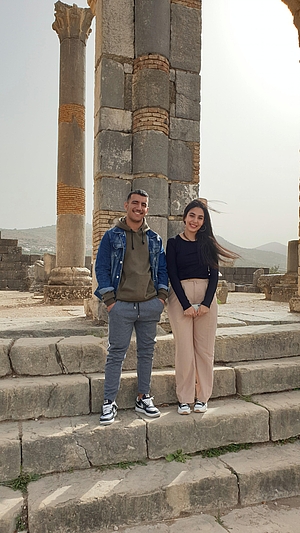
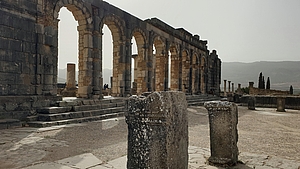
We also saw the town Moulay Idriss Zerhoun on a nearby hill. In this small town there is the Mausoleum of Moulay Idriss and it has become a place of Muslim pilgrimage, therefore only Muslims could enter the town until 1912, and up to 2005 “non-believers” were not allowed to stay overnight. Now everybody can stay, but we had no desire to do so.
The next stop was at Larache where we had an excellent lunch of fish and prawns. However the fort in the town is almost in ruins and there is not much more of interest, although otherwise it is a well-kept town on the Atlantic coast.
In Asilah, we stayed in a guesthouse La Perle near the beach. 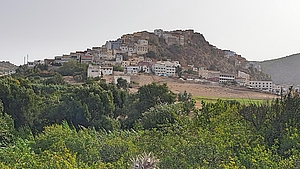
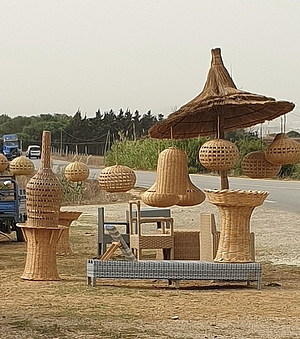
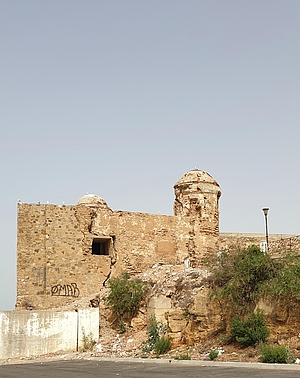
Seventh day - Tangier
On the way to Tangier, we stopped at the Cave of Hercules. It is an archaeological complex near Cape Spartel. There are many not too artistic statues of Hercules in the small Hercules Cave, and the large cave, said to have been built by the Phoenicians, has an opening, which is supposed to resemble the outline of Africa. However, generally spoken it is just a tourist attraction, as people in this region seems to be very interested in Hercules.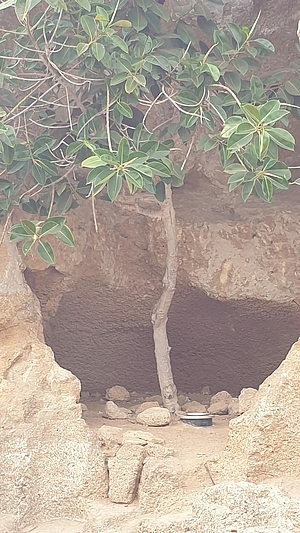
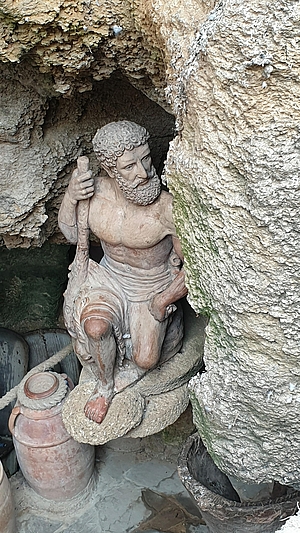
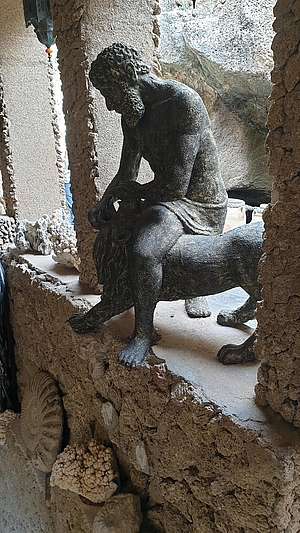
Cape Spartel is the place where the Atlantic Ocean meets the Mediterranean Sea. It is the most north western point of Africa. It has a tower and a lighthouse. But the place itself cannot be visited because Moroccan army is placed directly on the Cape, so the access for civilians is forbidden.
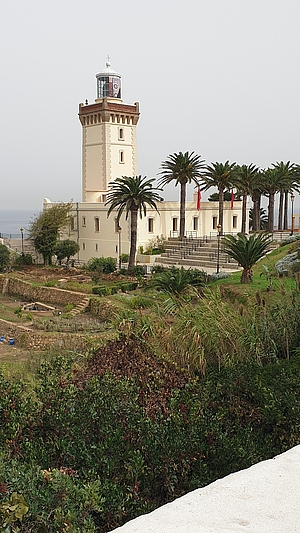
Tangier is much more interesting. A hundred years ago, it was a free trade zone and attracted dubious existences - spies, gamblers and drug lords. It still has a reputation as a city that is mysterious, alluring and dangerous at the same time. In the 1930s, smugglers, thieves and adventurers were followed by non-conformist intellectuals, later on in the sixties by writers such as Paul Bowles (The Sheltering Sky, The Spider's House), Truman Capote (In Cold Blood), André Gide, Jack Kerouc (On the road), Allen Ginsberg (known for his stay in Prague during the Prague of Spring 1968 and a poem Howl) and William S. Borrows (The Naked Lunch). The last three authors are the founders of the beat generation. Everyone alternately stayed in hotel El Muniria for a longer or shorter period of time, and I was keen to see the place. 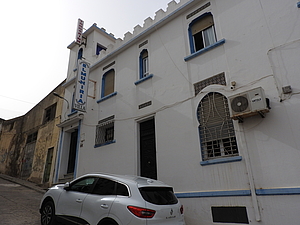
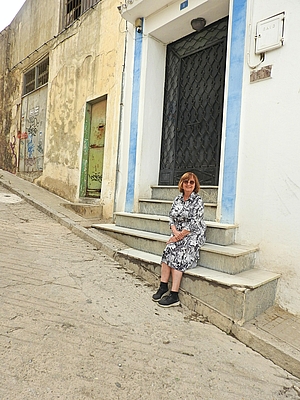
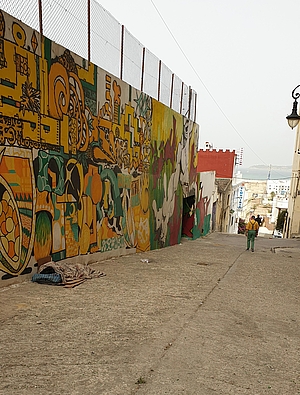
It must be said that our hotel Kasbah Rose in Tangier would have been suitable for the beat generation as well. As the name suggests, it was located on a hill near the fortifications of a kasbah (i.e. a citadel or fortress), and could not be reached by car. We parked as close as possible and had to climb many steep steps. We wouldn't have managed with our heavy suitcase, but the owner of the hotel helped to pull it up himself. Only later did we found out that the hotel could also be accessed from the top, where there were no stairs, but a tangle of very narrow pedestrian streets in which it would be easy to get lost. The room was miniature, so was the bathroom, instead of a wardrobe or a closet there were hooks on the wall. But the reward for the hardships was a first-class Moroccan breakfast served on the roof of the hotel overlooking the city the next morning. 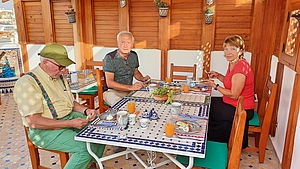
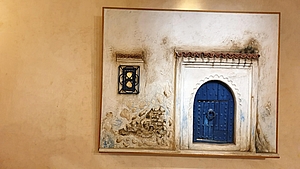
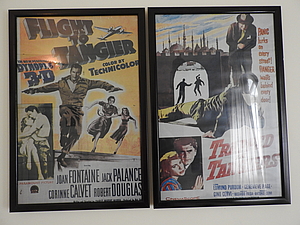
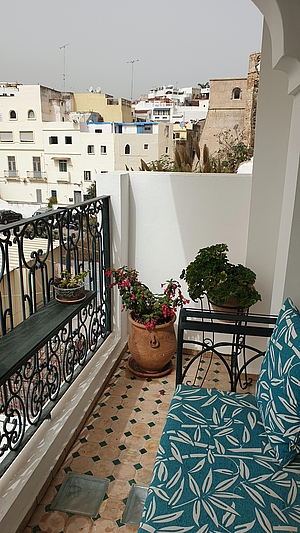
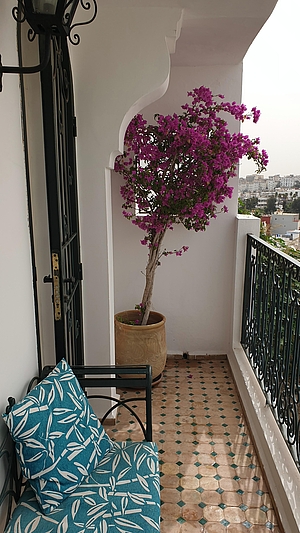
After checking in, we spent part of the afternoon at Café de Paris in the central Grand Socco square (known for the alternative Cinema Rif, a big marble fountain and a mosque) enjoying light lunch, mint tea and the view of crowds around us. After a bit of a complicated search for the El Muniria hotel, famous for the stay of the aforementioned writers of the 50s and 60s, we walked through somewhat run-down streets with graffiti-painted walls and had to ask the always helpful Moroccans for directions. Then we finally reached the waterfront with luxury yachts and boats. It only confirmed that Tangier is a city of great contrasts: on one hand the old medina and kasbah, on the other hand the marina for yachts and modern districts with luxury villas. Construction work is in full swing in the town which should bring some prosperity, but there seem to be huge differences between rich and poor residents.
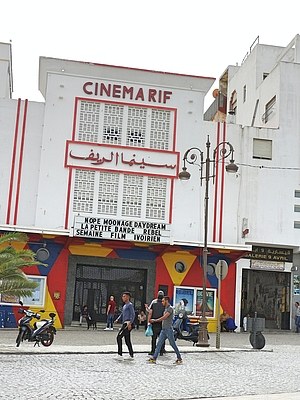

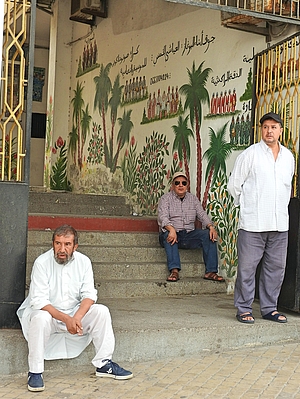
Eighth day – Ceuta
Ceuta, like Melilla, is a Spanish territory on the African continent. Historically, this is a very interesting situation. In the 8th century, Ceuta was a launch pad for Moorish conquest of the Iberian Peninsula. In the 15th century, Spain conquered back Melilla, in the 17th century Ceuta came back under the Spanish rule (Reconquista). In 1956, Morocco gained independence as part of the decolonization of Africa, but Spain retained Ceuta and Melilla. Morocco has never recognized the Spanish claim to Ceuta, Arabic Wikipedia even describes both cities as Moroccan under Spanish control, but it does not assert its claims aggressively. When Spain withdrew from Western Sahara in 1975, Morocco entered the war over the territory with Frente Polisario, which is seeking independence, but its claim to Ceuta and Melilla can be called lukewarm at best. From the point of view of international law, the possibility of enforcing the claim is also very small, since Morocco has not registered its requirements to decolonize these territories with the United Nations, and besides that the vast majority of the population wants to remain a part of Spain. The fact is that many Moroccans try to get to Spain via Ceuta, not the other way around. 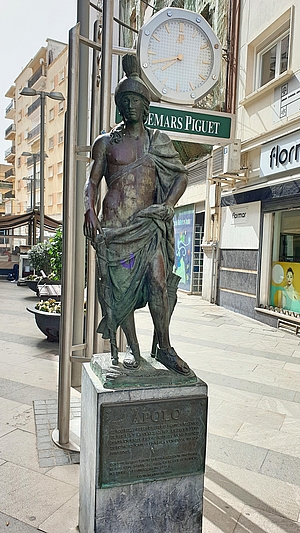
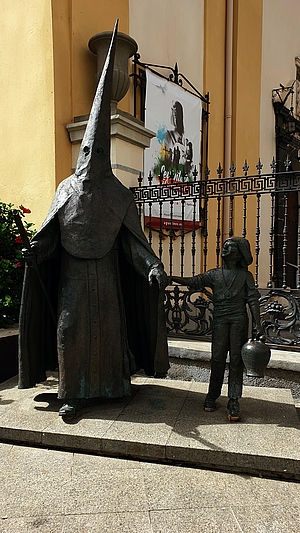
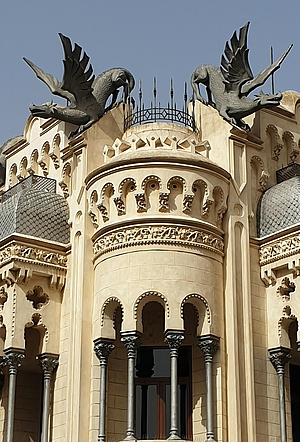
We were in the city only for a short time, but we immediately noticed the difference between Ceuta and the Moroccan cities we visited, it simply shows that it is European. In the city center, there is a landmark called Dragon House (Casa de los dragones), built in an eclectic style in 1905 with a striking four dragons on the roof.There are other interesting statues as well, e.g.Holy Week statue of a hooded penitent holding the had of a boy adjacent to Church of San Francisco, God Apollo and others.
The whole area seems to be obsessed by the mythical figure of Hercules. On the opposite side of the sea, in nearby Gibraltar, there is a monument called the Pillars of Hercules, who is said to create the Strait of Gibraltar. The northern pillar created by Hercules is supposed to be the Rock of Gibraltar and the southern pillar either Monte Hacho in Ceuta or Jebel Musa in Morocco (this is disputed). In Ceuta, Hercules is commemorated by two statues as well. One depicts an ancient hero separating two continents, Africa and Europe, with the title "Two Pillars of Hercules: Abyla and Calpe" (Abyla is the mythological name of Ceuta and Calpe the mythological name of Gibraltar). On the contrary, the second statue depicts Hercules trying to unite what he has just divided, and tilts the two pillars towards each other, which is supposed to symbolize the unity of all the countries of the world. The statue is therefore called: "Hercules uniting the two columns: The unification of the world".
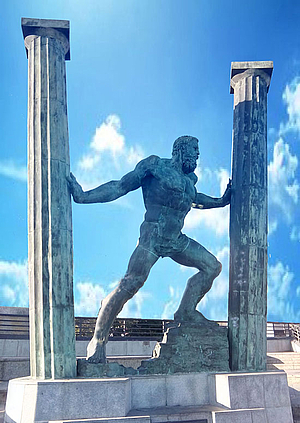
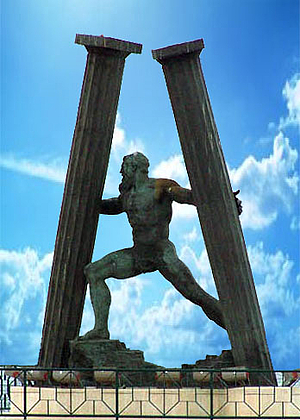
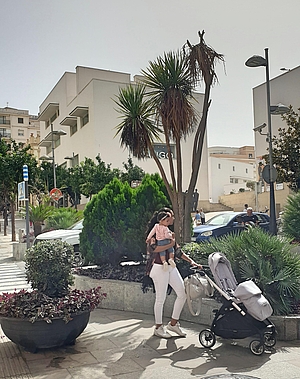
The cruise from Ceuta to Algeciras went without any problems, as did the border control (even though we had to show our passports seven times and they also checked our car, we are no more used to it when traveling in Europe). At six in the evening we were already at home in Estepona. We were in Morocco before (2002), but only in Marrakesh and surroundings, and once again, we were enchanted by its nature, history and very friendly people.
